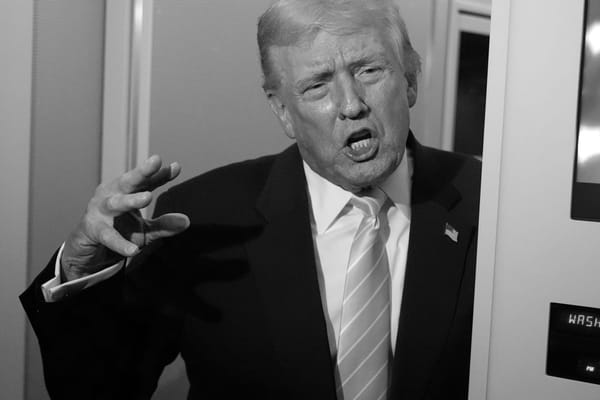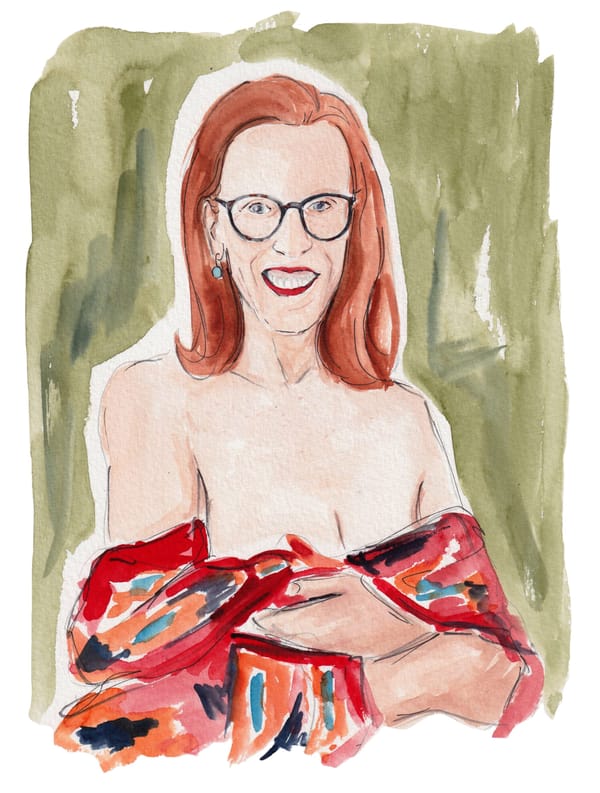We’ve Been Here Before: What You Need to Know About the Viral LinkedIn Name-Changing Trend
The latest LinkedIn trend that has women changing their gender or name in their profiles makes a point, but it’s a point as old as time. What we need is real change.

If you’ve spent any time on LinkedIn this month you’ve likely seen the “new” trend where women are changing their names to male-sounding names—then sitting back and watching their profile views and post impressions skyrocket.
From Lucy to Luke
The most widely shared (and an early) iteration of this LinkedIn trend was produced by Lucy Ferguson, the founder of a consultancy called “Fabulous Feminists.” Her post, where she explains that she changed her name from Lucy to Luke for one day on LinkedIn reads as follows—
I became a man on LinkedIn for 24 hours. Here's what happened...
✅ Impressions went up by 818% vs. prior 7 days
✅ Members reached went up by 893.3% vs. prior 7 days
✅ Profile viewers went up by 105% vs prior 7 days
✅ My post as Luke Ferguson on the future of the development and humanitarian sectors got 3,855 impressions and reached 2,860 members in just 24 hours.
✅ I saw job opportunities I don't normally see, despite not changing my bio or description
Others who jumped on the bandwagon included Simone Bonnett, who plastered a fake mustache on her profile picture and added the line “currently undercover for a gender bias test” to her profile. While Jessica Doyle Mekkes said she changed just her LinkedIn gender marker (but not her name) and saw her impressions increase by 700%.
Cindy Gallop, the self-proclaimed “Michael Bay of business" and founder of MakeLoveNotPorn, a sex-tech company that seeks to de-stigmatize sex has been pressuring LinkedIn and other social media platforms to share details on its algorithm and change how it, in her view, represses content from women and other marginalized groups. Gallop says that she has collected evidence of algorithmic bias for months and posted recently that LinkedIn agreed to open a second investigation after the first yielded no results.
Suzanne Lucas, a human resources consultant with over 54,000 LinkedIn followers got the following response when she put the question to LinkedIn:
"Our algorithms do not use gender as a ranking signal, and changing gender on your profile does not affect how your content appears in search or feed. We regularly evaluate our systems across millions of posts, including checks for gender-related disparities, alongside ongoing reviews and member feedback."
While Lucas points to other possible factors that may have boosted views such as users who asked ChatGPT to rewrite posts in a more “male” tone, that doesn’t explain those who did nothing but change their name or gender markers.



The 'ideal' leader and employee
That these posts neatly coincide with “International Men’s Day”—today, in case you forgot to mark your calendar—and that they’re mostly being shared by women with gender equity businesses hint at a bit of a convenient synergy. But even if this is all an elaborate marketing ploy by leaders of feminist organizations, and even if there isn’t a planned systematic algorithmic bias at LinkedIn, it doesn’t make the facts at the crux of this viral trend any less true: That in 2025, as in generations before, white men are still seen as the default when it comes to the ideal leader and employee.
Numerous studies back this up.
One good example is the 2014 Stanford study of 126 scientists looking at identical resumes using John vs. Jennifer found that Jennifer was viewed as less competent, less likely to be mentored or hired and if she was hired would be offered 13% less than “John.”
Name bias is even more pronounced when it comes to “non-white” sounding names. In a 2004 study economists sent out 4,000 resumes using a set of fictitious names to test for racial bias in the job market. They found that applicants with names suggesting they were white got 50% more callbacks from employers than those whose names suggested they were Black. The study was replicated and expanded 20 years later with 83,000 fake job applications and the results were much the same.
Meanwhile, AI (which 98.4% of Fortune 500 companies use in their hiring processes) is no doubt making bias in hiring even worse. A 2025 study of 500 resumes found that out of 27 tests for discrimination across three Large Language Models (AI trained on massive amounts of text) and nine occupations, resumes with female-associated names were favored in only 11.1% of cases, and white-associated names were favored in 85.1% of cases.
So what’s the solution? Calling attention to the problem with another iteration on the same experiment—albeit an imperfect one—as Lucy Ferguson has done, is helpful in making people more aware. But awareness alone doesn’t beget change. The type of pressure that Cindy Gallop others are putting on social media might.
The next step is coding bias out of algorithms in the first place. And in the meantime, companies can curb their own biases by introducing processes like “blind hiring” (a process of stripping information that could signal age, race or gender from job application materials before review). We know that businesses and workplaces perform better with diversity.
We know that competence, intelligence and leadership isn’t only packaged as a white man in a suit. Now the task is to train ourselves—and our technology—to stop relying on lazy assumptions as shortcuts.








